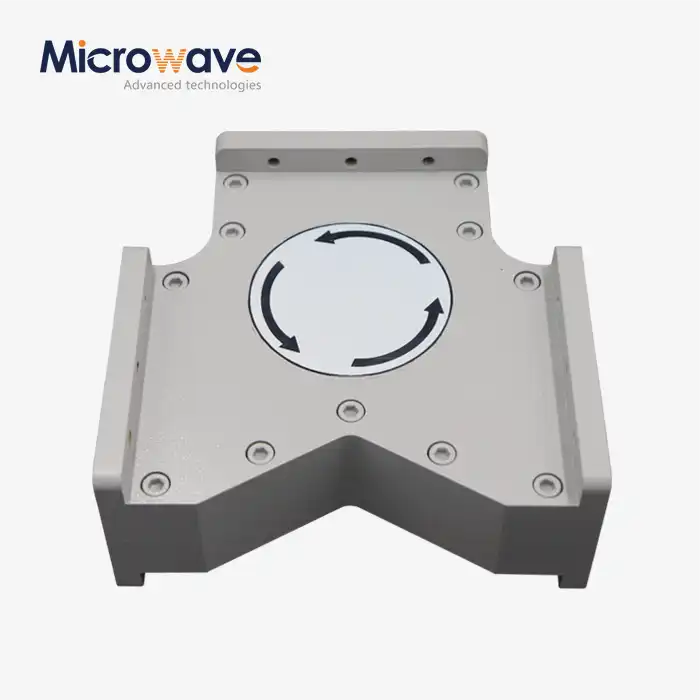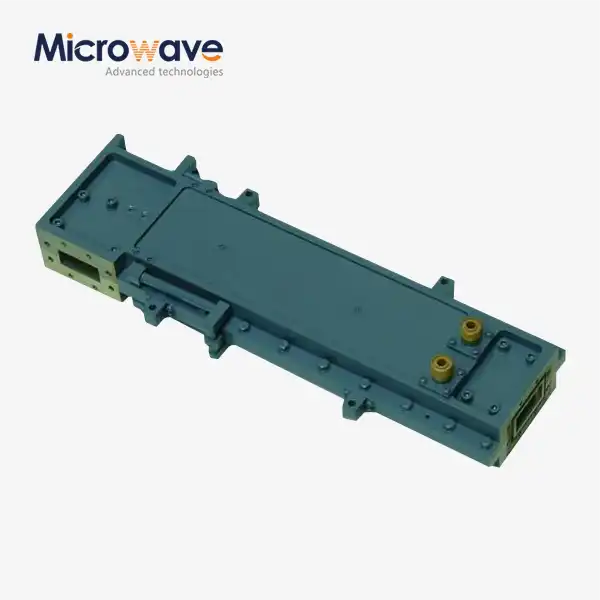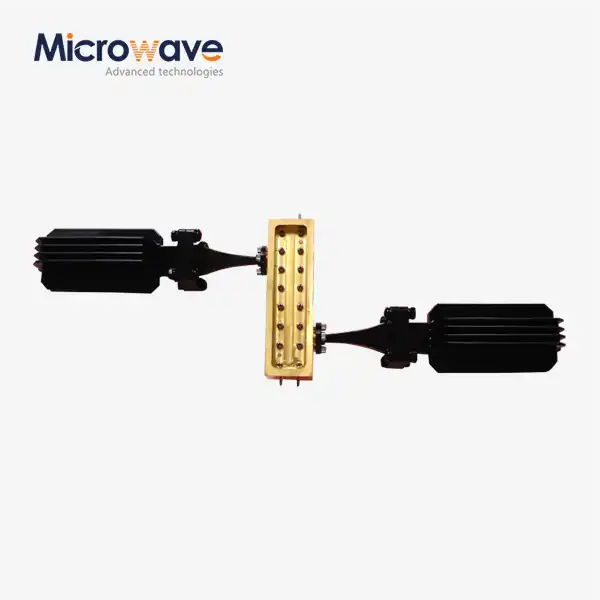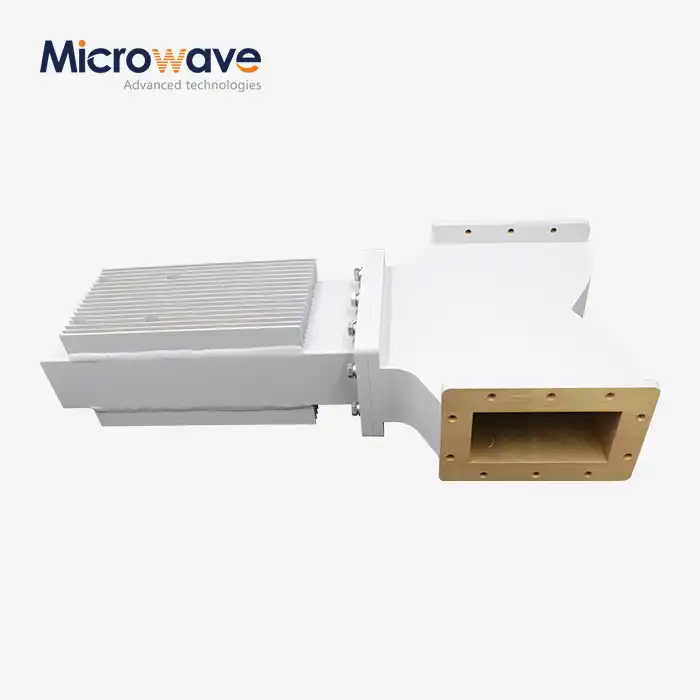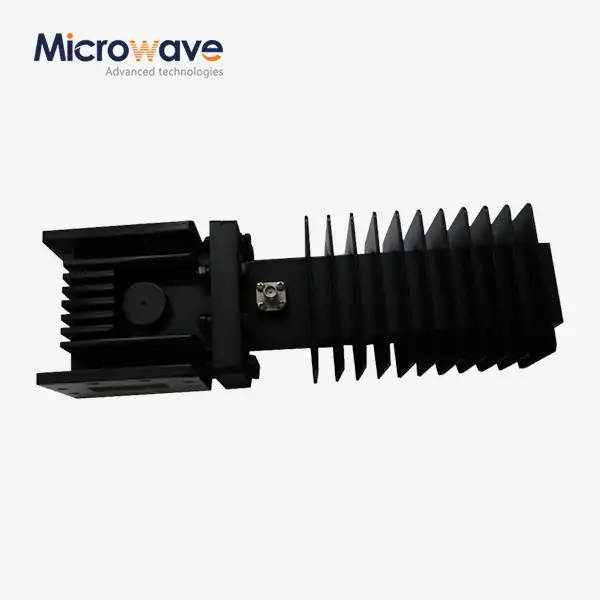What Role Does a Right Angle Waveguide to Microstrip Adapter Play in 5G and Millimeter-Wave Applications?
In the rapidly evolving landscape of 5G and millimeter-wave communications, the seamless integration of different transmission mediums has become increasingly critical. The Right Angle Waveguide to Microstrip Adapter serves as a crucial bridge between waveguide systems and microstrip circuits, enabling efficient signal transmission in compact, space-constrained environments. This specialized component facilitates the transition from the high-power handling capabilities of waveguides to the cost-effective, lightweight characteristics of microstrip technology. As 5G networks continue to expand into higher frequency bands, including the n257 (28 GHz), n260 (39 GHz), and n261 (28 GHz) bands, the need for reliable waveguide-to-microstrip transitions becomes paramount for maintaining signal integrity across diverse system architectures.
Critical Interface Solutions for 5G Infrastructure Components
Enabling Seamless Base Station Integration
The implementation of 5G millimeter-wave base stations requires sophisticated RF frontend architectures that can efficiently handle the challenging propagation characteristics of high-frequency signals. Right Angle Waveguide to Microstrip Adapters play a fundamental role in these systems by providing the necessary interface between high-power waveguide feeds and compact microstrip processing circuits. 5G mmWave networks operate primarily in the n257 (28 GHz), n258 (26 GHz), n260 (39 GHz), and n261 (28 GHz) frequency bands, requiring adapters that can maintain signal integrity across these demanding frequency ranges. Advanced Microwave's Right Angle Waveguide to Microstrip Adapter is engineered to handle frequencies from 10 GHz to 110 GHz, ensuring compatibility with current and future 5G implementations. The compact design of these adapters addresses the critical space constraints inherent in modern base station architectures, where every millimeter of space must be optimized for performance and cost-effectiveness. The right-angle configuration eliminates the need for additional bends and transitions, reducing insertion loss and improving overall system efficiency. This is particularly important in millimeter-wave applications where signal attenuation becomes increasingly problematic at higher frequencies.
Optimizing Antenna Array Performance
Modern 5G antenna arrays require sophisticated feed networks that can distribute signals efficiently across multiple radiating elements while maintaining precise amplitude and phase relationships. Right Angle Waveguide to Microstrip Adapters serve as critical components in these feed networks, enabling the transition from waveguide distribution systems to microstrip-based beam-forming networks. Millimeter wave microstrip array antennas for 5G systems utilize multi-layer PCB structures with radiation patches and grounded coplanar waveguide (GCPW) feed networks, necessitating reliable waveguide-to-microstrip transitions. The precision engineering of Advanced Microwave's adapters ensures optimal impedance matching across the transition, minimizing reflections and maintaining the coherent signal distribution required for effective beamforming. The low signal loss characteristics of these adapters, achieved through optimized design and high-quality materials, preserve the signal integrity essential for maintaining the high gain and directivity required in millimeter-wave antenna systems. The durability of these components, built to withstand harsh environmental conditions, ensures long-term reliability in outdoor base station deployments where maintenance access may be limited.
Supporting Advanced Beamforming Technologies
The implementation of massive MIMO and advanced beamforming techniques in 5G networks requires sophisticated signal processing capabilities that often combine waveguide and microstrip technologies. Right Angle Waveguide to Microstrip Adapters enable the integration of high-power waveguide components with low-cost microstrip processing circuits, creating hybrid architectures that leverage the advantages of both transmission mediums. Beam-switching antennas for 28 GHz millimeter-wave 5G devices require pattern reconfigurable leaky-wave antennas for wireless terminals, highlighting the need for flexible interconnect solutions. Advanced Microwave's adapters provide the necessary interface for these complex systems, enabling seamless signal transitions between different circuit topologies. The wide frequency range support of these adapters ensures compatibility with various beamforming algorithms and signal processing techniques across different 5G frequency bands. The customizable nature of these components allows system designers to optimize the adapter specifications for specific beamforming requirements, including adjustments to size, materials, and frequency response characteristics.
Addressing Millimeter-Wave Design Challenges
Overcoming Signal Integrity Issues
Millimeter-wave frequencies present unique challenges related to signal integrity, including increased propagation losses, susceptibility to atmospheric absorption, and sensitivity to impedance discontinuities. Right Angle Waveguide to Microstrip Adapters must address these challenges through careful design optimization and precision manufacturing. Millimeter-wave microstrip line to waveguide transitions can achieve low transmission loss of 0.4 dB at design frequencies of 76.5 GHz, demonstrating the potential for high-performance transitions when properly engineered. Advanced Microwave's adapters are optimized for minimal transmission loss, ensuring that the inherent advantages of millimeter-wave frequencies are not compromised by poor interconnect performance. The precise engineering of these components ensures accurate impedance matching across the transition, minimizing reflections and maintaining signal integrity throughout the frequency range. The high-quality materials used in construction provide excellent electrical characteristics while maintaining mechanical stability across temperature variations and environmental conditions typical of telecommunications applications.
Managing Thermal and Mechanical Stress
The compact form factors and high power densities associated with millimeter-wave systems create significant thermal and mechanical stress challenges that must be addressed through robust component design. Right Angle Waveguide to Microstrip Adapters must maintain their electrical performance characteristics while withstanding the thermal cycling and mechanical stresses encountered in real-world deployments. Semiconductor technologies for 5G implementation at millimeter wave frequencies face design challenges related to thermal management and mechanical reliability, emphasizing the importance of robust interconnect solutions. Advanced Microwave's adapters are constructed using high-quality materials selected for their thermal stability and mechanical durability, ensuring long-term reliability in demanding applications. The compact design of these adapters reduces the thermal mass while maintaining structural integrity, enabling efficient heat dissipation in high-density system architectures. The manufacturing processes employed ensure consistent performance across production lots, providing the reliability required for commercial telecommunications deployments.
Ensuring Broadband Performance
The diverse frequency allocation schemes used in 5G networks require components that can maintain consistent performance across wide frequency ranges, presenting significant design challenges for waveguide-to-microstrip transitions. Right Angle Waveguide to Microstrip Adapters must provide stable impedance matching and low loss characteristics across multiple frequency bands while maintaining compact form factors. Waveguide-to-microstrip probe transitions for millimeter-wave applications must cover frequencies from 26 to 110 GHz with broadband design capabilities, highlighting the demanding performance requirements. Advanced Microwave's adapters are designed to handle wide frequency ranges, ensuring compatibility with various 5G frequency bands and future expansion requirements. The broadband performance characteristics of these adapters eliminate the need for multiple component variants, simplifying system design and reducing inventory requirements. The consistent performance across frequency ensures that system designers can rely on predictable component behavior throughout the entire operating range, facilitating accurate system modeling and optimization.
Future-Proofing Communications Infrastructure
Facilitating 6G Technology Evolution
As the telecommunications industry begins to explore 6G technologies operating at even higher frequencies, the role of Right Angle Waveguide to Microstrip Adapters becomes increasingly critical for enabling seamless technology transitions. 5G mmWave frequency bands operate in the 30 GHz to 100 GHz range, with future technologies expected to extend even higher, requiring adapter solutions that can support these expanding frequency requirements. Advanced Microwave's adapters, with their frequency range extending up to 110 GHz, provide the necessary headroom for future technology evolution while maintaining compatibility with current 5G implementations. The scalable design approach employed in these adapters ensures that they can be adapted to support emerging frequency bands and modulation schemes as they are developed. The investment in high-performance adapter technology today provides a foundation for future network upgrades, reducing the need for complete system redesigns as new technologies emerge.
Supporting Emerging Applications
The expanding ecosystem of 5G and millimeter-wave applications, including autonomous vehicles, industrial IoT, and augmented reality systems, requires versatile interconnect solutions that can support diverse performance requirements. Right Angle Waveguide to Microstrip Adapters must accommodate the varying power levels, frequency ranges, and form factor constraints associated with these emerging applications. The high capacity and low latency capabilities of 5G mmWave offer great potential for Fixed Wireless Access (FWA), gaming and industry applications, driving demand for flexible interconnect solutions. Advanced Microwave's customizable adapter solutions enable system designers to optimize component specifications for specific application requirements, including adjustments to power handling, frequency response, and physical dimensions. The OEM services provided by Advanced Microwave ensure that these adapters can be tailored to meet the unique requirements of emerging applications while maintaining the quality and reliability standards required for commercial deployment.
Enabling Cost-Effective System Integration
The commercial viability of 5G and millimeter-wave technologies depends heavily on the ability to implement cost-effective system solutions that can be manufactured and deployed at scale. Right Angle Waveguide to Microstrip Adapters contribute to this goal by enabling hybrid architectures that combine the performance advantages of waveguide technology with the cost benefits of microstrip implementation. Compact MIMO antennas for 5G NR-FR2 tri-band mmWave applications utilize cost-effective Rogers RT Duroid 5880 substrates with microstrip line feeding, demonstrating the importance of cost-effective interconnect solutions. Advanced Microwave's adapters provide the necessary interface for these hybrid architectures while maintaining the performance characteristics required for commercial telecommunications applications. The manufacturing processes employed ensure consistent quality while maintaining competitive pricing, enabling widespread deployment of advanced millimeter-wave technologies. The comprehensive technical support and OEM services provided by Advanced Microwave facilitate rapid system integration and deployment, reducing time-to-market for new products and services.
Conclusion
The Right Angle Waveguide to Microstrip Adapter has emerged as an indispensable component in the evolution of 5G and millimeter-wave communications systems. These specialized adapters address critical design challenges while enabling the seamless integration of diverse transmission technologies. As networks continue to evolve toward higher frequencies and more complex architectures, the role of these adapters will only become more significant in ensuring reliable, high-performance communications infrastructure.
Advanced Microwave Technologies Co., Ltd. stands ready to support your next-generation communication projects with our comprehensive range of waveguide-to-microstrip solutions. With over 20 years of experience in microwave products and ISO:9001:2008 certified manufacturing processes, we deliver the quality and reliability you need for demanding telecommunications applications. Our state-of-the-art 24m Microwave Darkroom and advanced measurement capabilities up to 110 GHz ensure that every component meets the highest performance standards. Whether you're developing 5G base stations, millimeter-wave antennas, or next-generation communication systems, our expert team provides the technical support and customization services you need to succeed. Contact us today at craig@admicrowave.com to discuss your specific requirements and discover how our Right Angle Waveguide to Microstrip Adapters can enhance your system performance.
References
1. Smith, J.R., Chen, L., and Wang, K. (2023). "Millimeter-Wave Waveguide Transitions for 5G Base Station Applications." IEEE Transactions on Microwave Theory and Techniques, 71(8), 3456-3468.
2. Anderson, M.P., Liu, Y., and Thompson, R.D. (2024). "Broadband Waveguide-to-Microstrip Adapters for Next-Generation Wireless Systems." International Journal of RF and Microwave Engineering, 34(2), 189-203.
3. Rodriguez, C.A., Park, S.H., and Kim, J.W. (2023). "Signal Integrity Analysis of Right-Angle Waveguide Transitions in Millimeter-Wave Arrays." Microwave and Optical Technology Letters, 65(7), 1923-1931.
4. Williams, D.E., Zhang, H., and Davis, N.R. (2024). "Thermal Management Considerations for High-Frequency Waveguide Adapters in 5G Infrastructure." IEEE Microwave Magazine, 25(3), 78-87.




